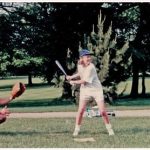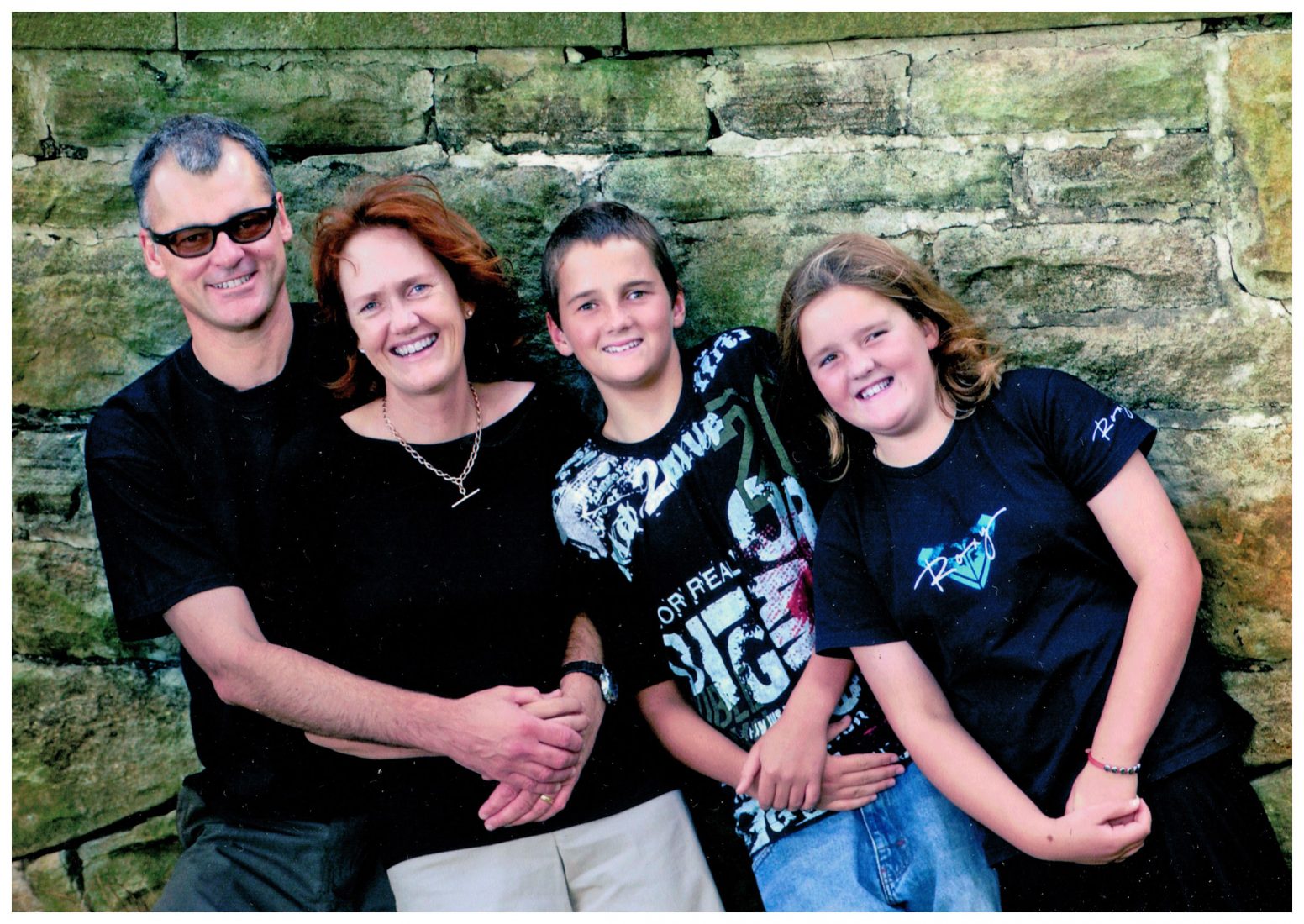 Delwyn Everard is passionate about the arts and social justice. She provides practical strategic advice to creatives, arts organisations and businesses. Her expertise lies in business governance, business contracts and all forms of intellectual property including Indigenous cultural intellectual property. Her style is collaborative and empowering.
Delwyn Everard is passionate about the arts and social justice. She provides practical strategic advice to creatives, arts organisations and businesses. Her expertise lies in business governance, business contracts and all forms of intellectual property including Indigenous cultural intellectual property. Her style is collaborative and empowering.
The story until now…
Timeline
Growing up in Perth: a loving family, not too flash
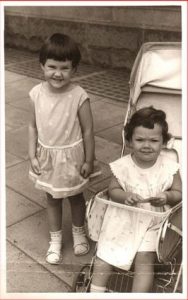 My Dad was one of those jug-eared, red-haired, freckled, sporty types and Mum was quite beautiful. I think they both would have loved to have had an education, Mum especially.
My Dad was one of those jug-eared, red-haired, freckled, sporty types and Mum was quite beautiful. I think they both would have loved to have had an education, Mum especially.
In those days, Perth just had one University and whenever we drove past the big clock tower, she’d say ‘That’s the university and if you want to, one day you can go there.’ So I just always knew I would.
I was the eldest child and a hopelessly good girl. I never did anything naughty. I was responsible and studious. But by the time I finished school, I had my eyes set on having an adventure.
Stumbling on the law: Germany
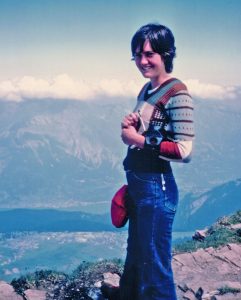 I badgered Mum and Dad to let me accept an exchange scholarship. I was 16 when I arrived in Germany for a year and had never been overseas before. Of the five families I stayed with, one host father was a lawyer and one was a judge. I’d always thought I’d be a journalist but that year changed my mind.
I badgered Mum and Dad to let me accept an exchange scholarship. I was 16 when I arrived in Germany for a year and had never been overseas before. Of the five families I stayed with, one host father was a lawyer and one was a judge. I’d always thought I’d be a journalist but that year changed my mind.
My graduating group from Law School in Perth
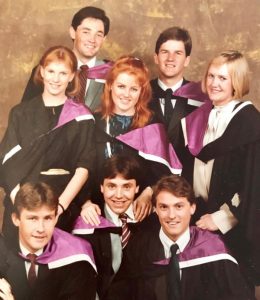
I came back to Perth and studied law. By the time I finished I was restless again and desperate to live and work overseas.
New York New York: 1980s
I found Intellectual Property when I did my Masters of Laws at Columbia University. One of the courses I took was Law and Theatre – half the students were in law and half were doing theatre arts. We basically negotiated all the agreements that would need to be in place to put on a Broadway show. It was so different to the dry, old law I’d been studying at home.
I did all these amazing subjects. In the Moral Rights unit, I learned about the personal right of each creator to protect the integrity of his or her artistic and creative endeavours, and to have their name associated with their work. The Civil Rights and Social Change unit was taught by Professor Jack Greenberg who’d marched side by side with Martin Luther King in the 60’s. At Columbia, we were taught by the people who wrote the text books and were advocates for change.
I was married by then and my husband and I both sat the New York Bar exam so we could stay on and work in the Big Apple. It was fast and exciting and I worked at a great address: 1 Wall Street.
Sydney – Looking out for Prince
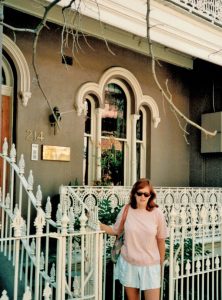 After a year of backpacking around Europe we returned to Australia. I was working in the litigation department of a big firm which dropped me straight into the world of intellectual property disputes – music copyright, trademarks and lots of patents. It was very cool. We chased distributors of a bootleg Prince album that was never supposed to be released. It was called the Black Album because it had no markings, no label but if you saw it… you knew exactly what it was.
After a year of backpacking around Europe we returned to Australia. I was working in the litigation department of a big firm which dropped me straight into the world of intellectual property disputes – music copyright, trademarks and lots of patents. It was very cool. We chased distributors of a bootleg Prince album that was never supposed to be released. It was called the Black Album because it had no markings, no label but if you saw it… you knew exactly what it was.
I got hooked on creator’s rights – whether the rights of an artist or a scientist who’d discovered something new. I loved putting together the evidence that proved a creator’s ownership – this involved getting their story. You’d sit down with them and say, ‘Well, how did you come up with this? What was the creative process? Why is it valuable to you?’ Hearing those stories from creators is fascinating: whether they be musicians, artists or inventors. I got a buzz hearing about that ah-ha moment in a research laboratory, for example.
From Grade 4 to Crown Law and Native title
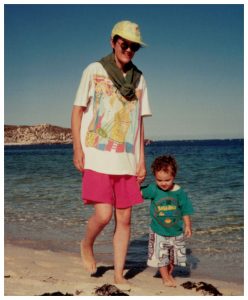 Briefly back in Perth in the early 1990s with two small children, I took a couple of part-time jobs tutoring at my old Law School and doing historical research on native title claims. I got the research job through Dr Neville Green who had been my Grade 4 teacher and had tracked me down to help him on one of the books he was writing. He was the first person to introduce me to Aboriginal history and culture. He’d taught at the mission at Warburton Ranges before he came to my school, and was keen to share that experience with his class of eight year olds. He organised Aboriginal people to come and talk with us, showed us Aboriginal art and artefacts and told us the stories of what happened after European settlement. I remember I wrote a play about one of those stories and we produced it in class. Maybe that’s why he’d remembered me after all those years.
Briefly back in Perth in the early 1990s with two small children, I took a couple of part-time jobs tutoring at my old Law School and doing historical research on native title claims. I got the research job through Dr Neville Green who had been my Grade 4 teacher and had tracked me down to help him on one of the books he was writing. He was the first person to introduce me to Aboriginal history and culture. He’d taught at the mission at Warburton Ranges before he came to my school, and was keen to share that experience with his class of eight year olds. He organised Aboriginal people to come and talk with us, showed us Aboriginal art and artefacts and told us the stories of what happened after European settlement. I remember I wrote a play about one of those stories and we produced it in class. Maybe that’s why he’d remembered me after all those years.
A Turning Point
We were living back in Sydney and I was an intellectual property partner at Spruson & Ferguson Lawyers when I lost my parents in a car accident. This made me reconsider a lot of things. I made a decision that I would step back from the demands of corporate legal practice and look for more balance in my life.
I remember thinking ‘Well, I’m going to do something different. I’m going to take a year off and have a think.’ I’d worked incredibly hard and done amazing things but it just wasn’t bringing the same joy.
At some stage, I contacted the Executive Director of the Arts Law Centre which is Australia’s national community legal centre for arts and arts organisations and said, ‘Look, I was thinking of volunteering. This is my background – would you be interested?’ We had a coffee and by the end of the coffee, I had a job. I stayed nearly 10 years. (That was a powerful brew!)
Working with creators: what a feeling
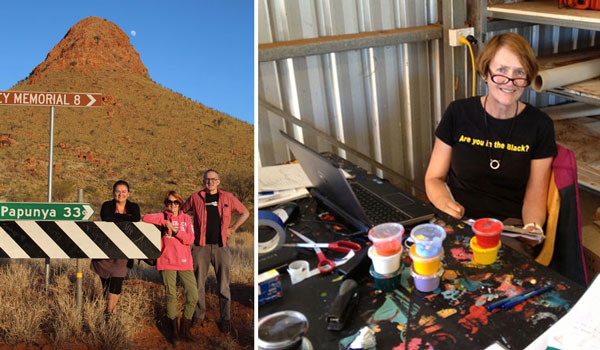
The people who go to a community legal centre often don’t have any other avenue for legal advice. They just can’t afford it. So when you help them, you really make a difference.
Many are sophisticated creatively but just don’t understand their rights. Or how the law can protect them. Empowering them with that knowledge can be transformative.
And I certainly felt more empowered by helping them.
The Arts Law Centre had developed a ground breaking program working with Indigenous artists that really resonated with me. I did a lot of work directly with Aboriginal and Torres Strait Island artists in remote communities. When I look back at my history, I think I had always been more aware of Indigenous culture and history than a lot of people. Not nearly as much as many – but more than a lot. Now I learned so much more.
Many things were coming together. I’ve always been interested in human rights and I’ve always loved the arts. The feeling of being able to really help creators and to work directly with so many naturally gifted and talented artists and see them empowered with the knowledge of their rights – that is a great feeling. I think it’s been the most important work I’ve ever done.
Now, with my own practice, I can continue working with Australia’s most creative communities and people. It brings me joy every day.
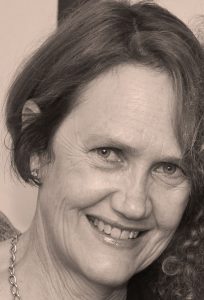 Contact me if you would like to know more about my work and how I might help you.
Contact me if you would like to know more about my work and how I might help you.
